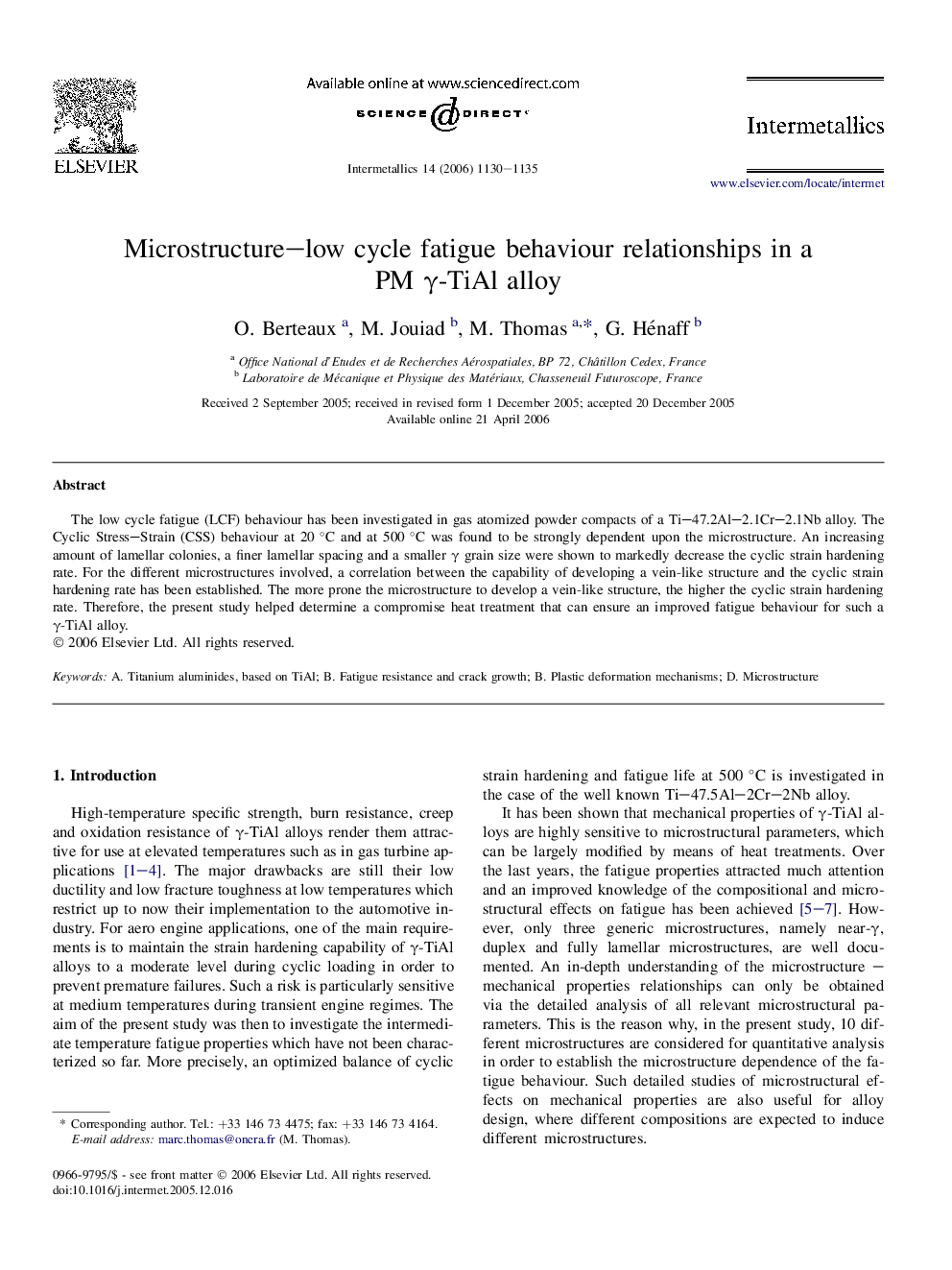| Article ID | Journal | Published Year | Pages | File Type |
|---|---|---|---|---|
| 1602060 | Intermetallics | 2006 | 6 Pages |
The low cycle fatigue (LCF) behaviour has been investigated in gas atomized powder compacts of a Ti–47.2Al–2.1Cr–2.1Nb alloy. The Cyclic Stress–Strain (CSS) behaviour at 20 °C and at 500 °C was found to be strongly dependent upon the microstructure. An increasing amount of lamellar colonies, a finer lamellar spacing and a smaller γ grain size were shown to markedly decrease the cyclic strain hardening rate. For the different microstructures involved, a correlation between the capability of developing a vein-like structure and the cyclic strain hardening rate has been established. The more prone the microstructure to develop a vein-like structure, the higher the cyclic strain hardening rate. Therefore, the present study helped determine a compromise heat treatment that can ensure an improved fatigue behaviour for such a γ-TiAl alloy.
